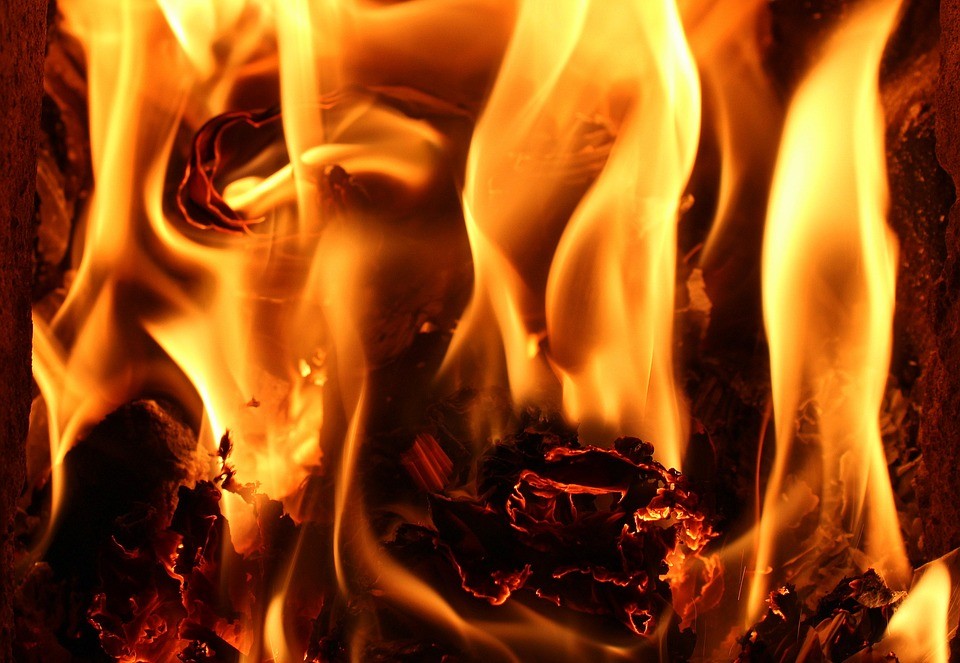LED lights and heat. Why it's important to understand + a warning
11/2018
Let's start with the warning: at the end of this article there's a section of technical information mixed in with marketing content. I feel there isn't enough emphasis on the sensitive relationship between LED lighting and heat. I think that it's due to people's lack of knowledge, and the spreading of a myth that I am about to bust. |
The myth - LED lighting doesn't give off heat.Busting the myth - this is not true.LED lighting does give off heat, but much less than lighting using older technologies. And, unlike other technologies, with LED lighting, the heat and light are projected in opposite directions. It will still be some time until we are able to manufacture lights which don't emit heat; however the heat emission is much lower than we are used to. If you have a high quality LED fixture then for each watt of power, 30% will be light and 70% will be dispersed as heat. If you have an excellent fixture, 40% will be light and 60% heat. With LED lighting the power usage is lower compared to other lighting methods and therefore the heat emission is lower. This heat emission has vast implications for LED lighting.  | Now for the second myth - LED lights are good for 50,000 hours.We must remember that the basic component of the LED light is the diode itself (LED = Light Emitting Diode) and this component is very heat sensitive. If we don't know how to funnel away this heat, then the diode might not last even 200 hours. In this case we won't bust the myth, just make it more precise. So yes, LED lighting built of quality components, and a correct design will last 50,000 hours or more.The junction point at which the LED fixture is attached to the electric circuit is critical in heat dispersal. Any reputable LED manufacturer which supplies data on the diodes it manufactures will state that this information is conditional on the junction not exceeding a certain temperature. The junction temperature affects the life of the component, the rate of the light decay, the stability of the correlated color temperature or the spectrum and the luminous efficacy (how many light units are produced per watt used). This is the Achilles heel of LED and practically every LED fixture or light that you have seen or will see in the future has a built-in system to solve this issue. |
Here are three of the ways to dissipate heat from an LED fixture: |
1. Passive coolingThe most common heat dissipation system. Most of the LED lights that we see have aluminum heat sink elements attached, sort of like a radiator. The whole purpose of this system is to absorb the heat produced at the junction and disperse it as quickly and efficiently as possible. Examination of this system takes into account the quality, thickness and conducting properties of the aluminum as well as the interface between the heat sink and the electrical circuit, the design, attaching method etc. This system is suitable for almost every type of installation and application, with the only limitation being the wattage of the product and its use. This means that, providing a good quality product is used, even a 1000W LED light with a passive cooling system will work, if it's outdoors. If we try this indoors to light a facility, then the limited airflow and heat buildup in the upper level of the space could affect the fixture and cause it to work at lower efficiency and shorten its lifespan. 2. Active coolingThis system is less common but more efficient than passive cooling. Active cooling uses fans for heat dissipation. This system can also work in tandem with passive cooling. This system causes the hot air to move away quickly from any problematic junction. When customers purchase LED lighting they expect a drop in electricity usage. They also expect the fixture to work as promised over a long time. Even if we were particular in choosing a quality fixture with a driver guaranteed to work a long time, if the fan stops working completely or doesn't work as well after a couple of years, heat buildup will cause the LED to fail. This type of lighting fixture is designed to withstand a certain load and takes into account the capabilities of the fan. If the fan stops working correctly, heat buildup will be above the parameter used to calculate the life span of the system as stated in the data page. A fan is a dynamic component. In my opinion, this causes more problems in the long run. Therefore, even if do you choose this system, focus on the quality of the product and the length of the fan's guarantee; otherwise you could be disappointed. Active cooling is not suitable for every use. For example, imagine an office where every fixture has a fan, like a computer. Now try to remember how many light fixtures there are and imagine sitting underneath this humming all day, every day. It's not like one computer per person and the noise would definitely affect the work environment. This system works best when insisting on quality components and is most suitable, in my opinion, in settings where noise isn't a factor and where high light intensity is necessary, such as production floors, outdoor shelters, tall hangars, growing rooms, outdoor lighting and more. | 3. Liquid coolingThis is not a common method. I have seen this system working both for individual fixtures and entire lighting arrays. This is a closed water system with pipes running through the lighting fixtures. Liquid flows through these pipes in the fixtures then back though a chiller which cools it. Water is a good heat conductor and vastly improves heat dispersion. We get a lifespan of 100,000 hours with very high light efficacy, very slow light degradation and the spectrum remains stable over time. There is an enormous advantage when using this system.This advantage isn't directly in lighting but helps save a lot of money and dramatically affects the growing environment. We said previously that a quality product will convert 60-70% of electricity usage to heat and we do everything possible to move this heat away from the fixtures, but where does it go? Using the previous systems, the heat is moved from the fixtures and dispersed in the space. In a growing room a large part of the electricity used is for climate control/cooling. The major advantage of this system is that it serves multiple lighting fixtures, uses a closed water system, and moves the heat to wherever we decide to place the chiller, which can also be placed outside the growing space. Not only do we improve the functionality of the fixture, but we also remove the heat that the lighting creates, moving it far from the growing area.In our systems we manage to achieve up to 85% heat removal from the room, considerable reduction on wear and tear of the climate control system and lower energy use. This greatly reduces the carbon footprint and money stays in the grower's pocket. Control of the temperature in the growing space is critical to providing the optimal growth protocol and this system makes climate control much easier. In cold countries the heat from the water cooling system can be used to heat other areas of the growing room and here there is saving on saving of power which significantly reduces electricity costs. |
As lighting suppliers, particularly of agricultural grow lights, we understand that building an ecosystem, where different parameters work well together, is critical and the only way to true success in this field.We could say our "responsibility" as lighting suppliers, starts and ends with lighting, but this is not how we work. The added value that we provide to our customers who are working with complicated, expensive growing systems is by looking at additional parameters in the protocols and helping improve the overall product. That's it for now. I wish us all good light |
